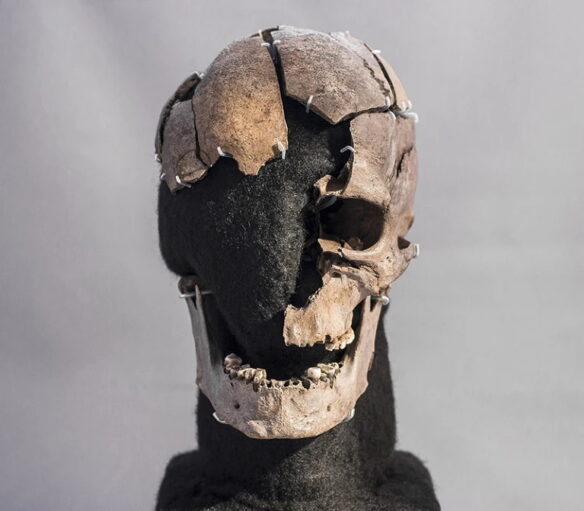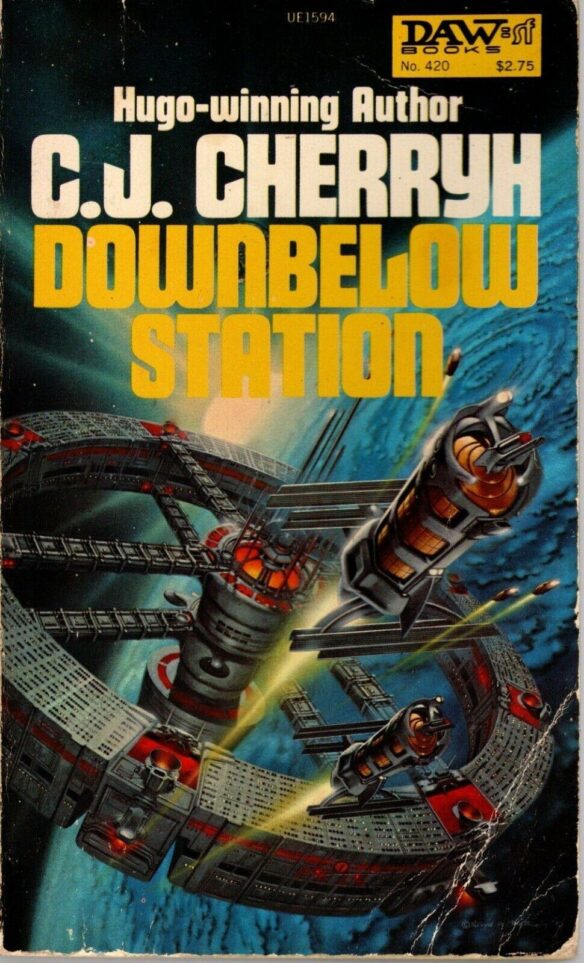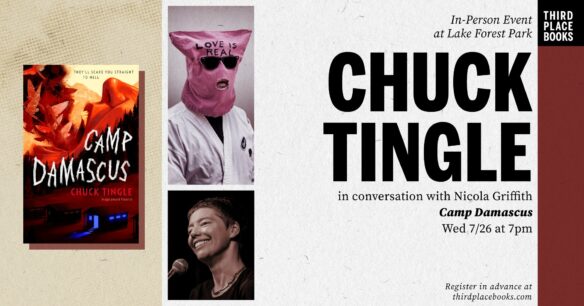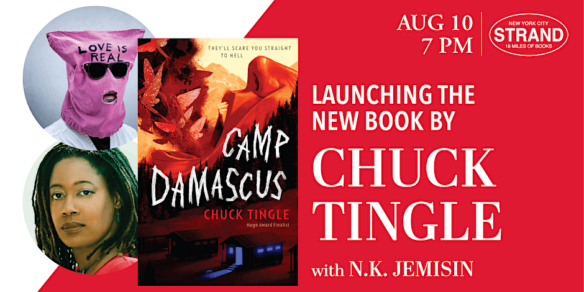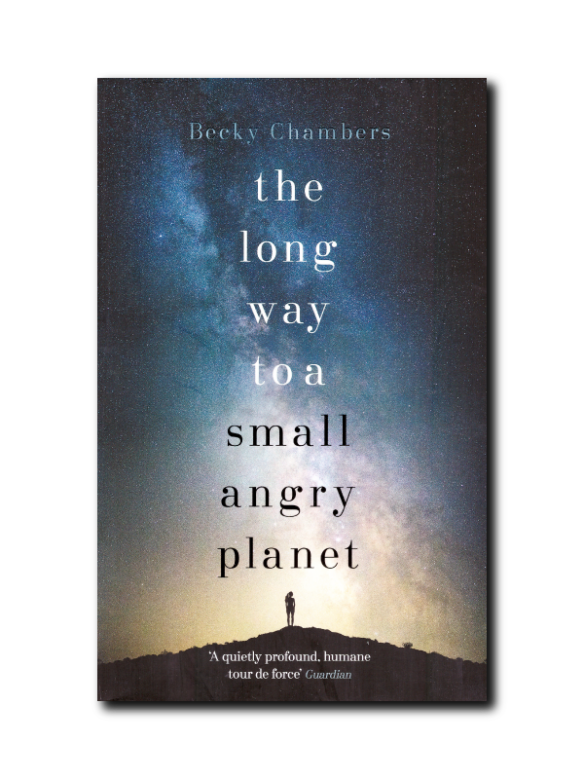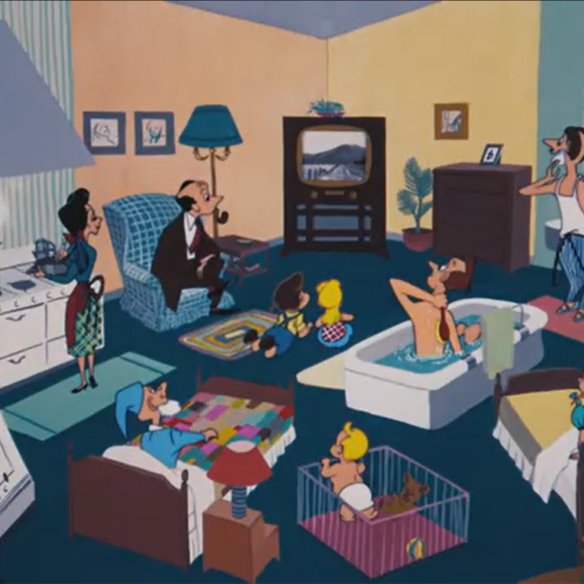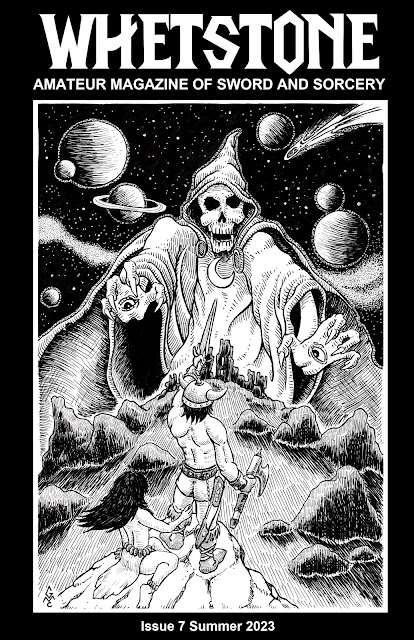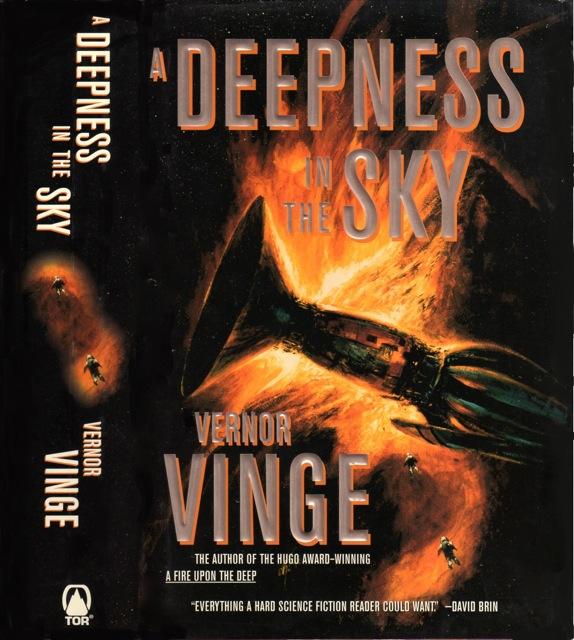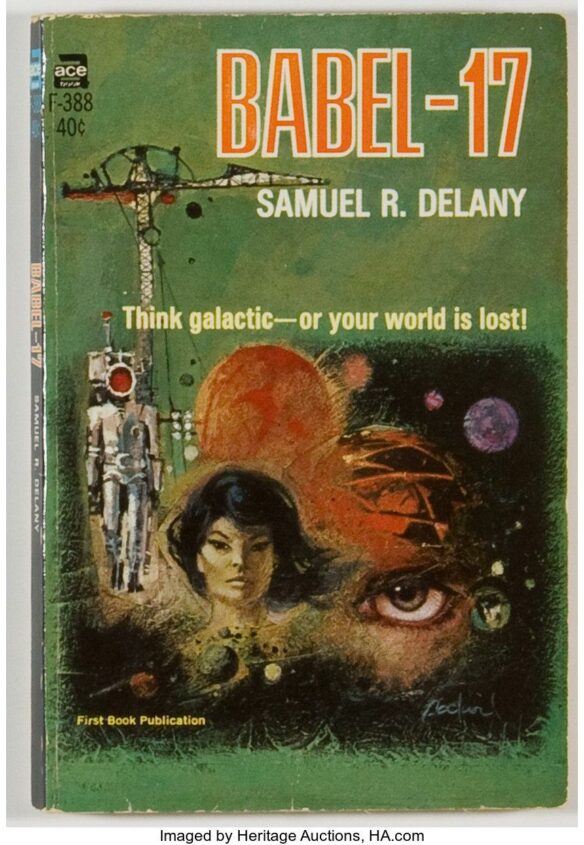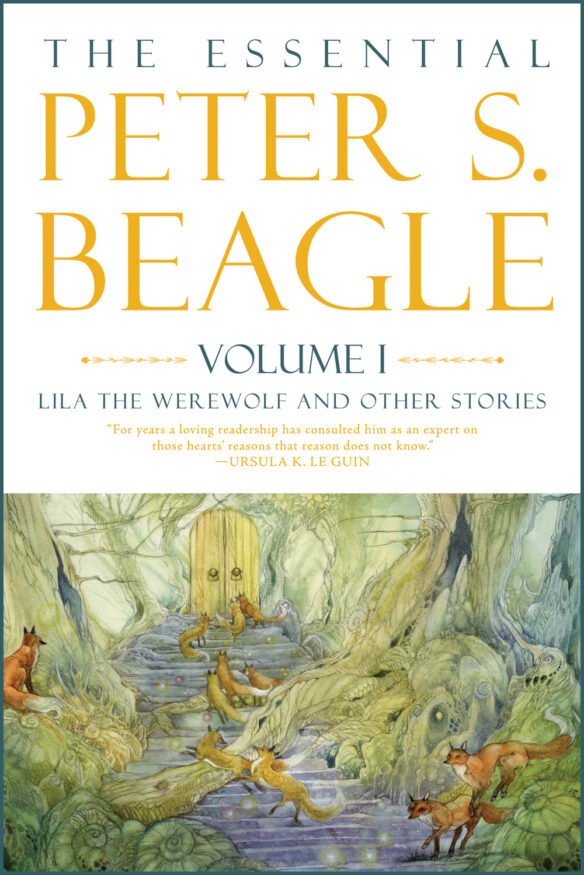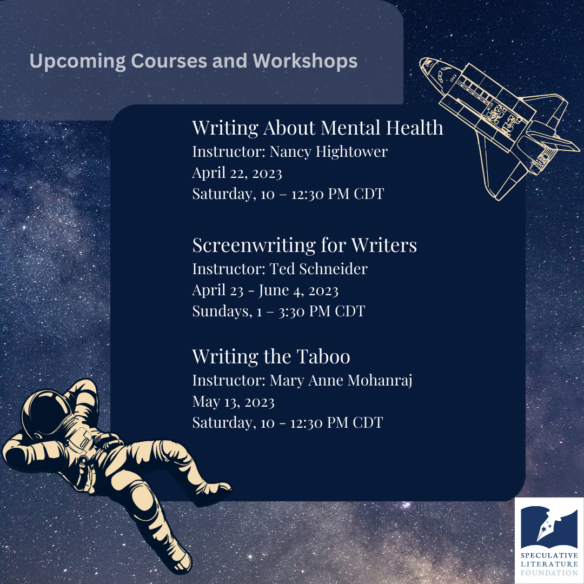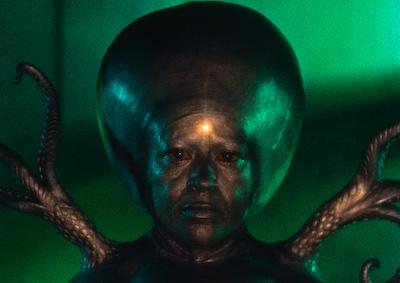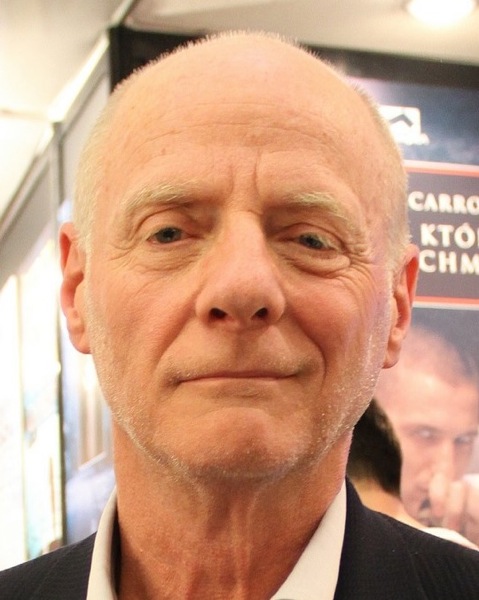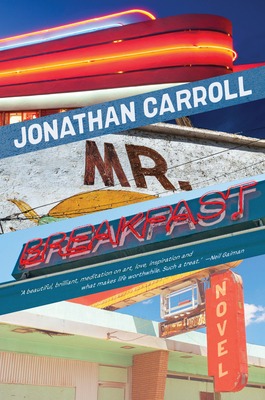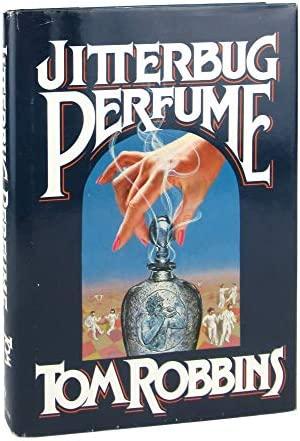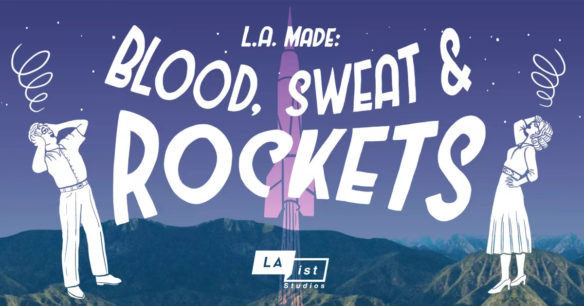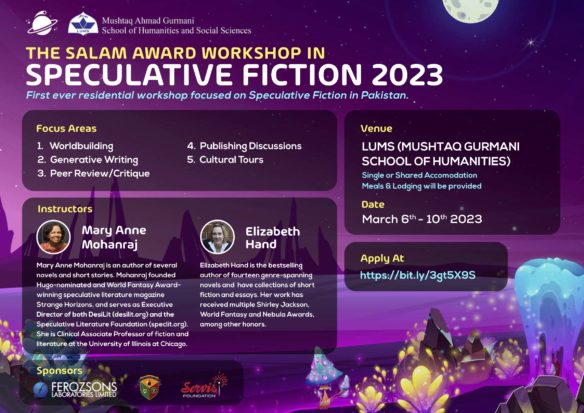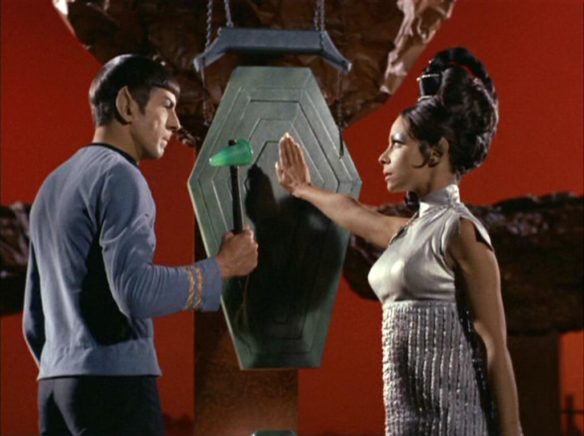(1) SPECIAL DINO DELIVERY. Royal Mail’s “The Age of the Dinosaurs” special issue features eight new stamps showing different prehistoric species and their habitats. The stamps are in collaboration with the Natural History Museum and also celebrate 19th-century paleontologist Mary Anning. (Click for larger images.)






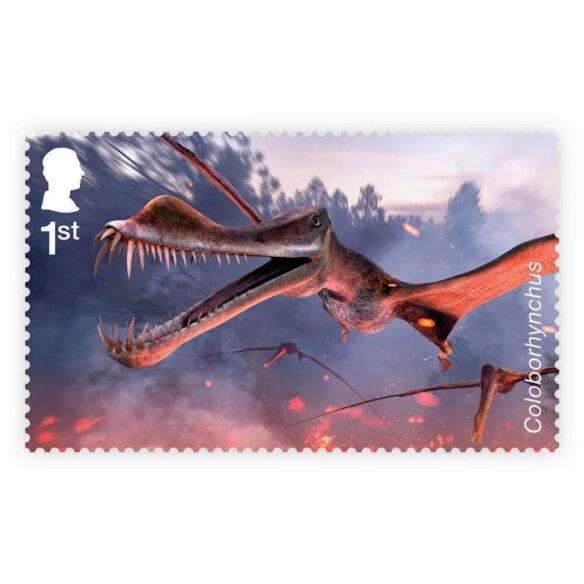

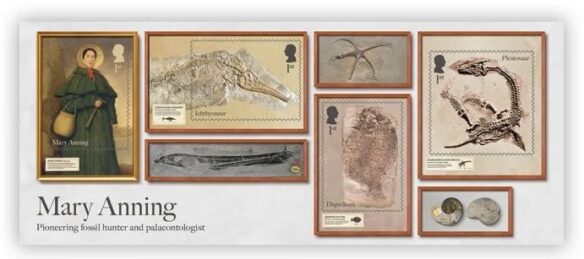
(2) WICKED WORLD’S FAIR MELTDOWN. Stephen Beale, editor of The Steampunk Explorer, offers an “Inside Look: What Happened at Wicked World’s Fair?” The post first appeared on March 7 and has been updated half a dozen times with additional sources. Beale provided this synopsis of the post for File 770:
The event, Wicked World’s Fair, took place in February in Pennsylvania.
The organizer (Jeff Mach) is a highly controversial figure who previously ran the Steampunk World’s Fair, which was one of the largest steampunk events in the U.S. It collapsed in 2018 following misconduct allegations. The Daily Beast had a story about it.
The short version of this latest event is that he significantly overbooked vendor spots, so they ended up in spaces intended for panels and other non-vendor activities.
The sound crew for concert performances walked out due to non-payment.
There was a $35-per-head tea party, for which he sold 88 tickets, but due to overcrowding of vendors, there wasn’t enough capacity for all the ticketholders.
Requests for refunds via Eventbrite were declined. He’s blaming Eventbrite, but it appears that he just didn’t have the funds to cover his expenses.
My sources for the story include the former vendor coordinator and the former operations manager, both of whom worked as volunteers.
Some widely circulated videos show a confrontation between Mach and the vendors. One has 1.2 million views on Facebook. In some videos, one of his associates is seen standing in front of a vendor and reaching for a sword.
Since the event, vendors formed a private Facebook group called Disgruntled Wicked Vendors. It has around 100 members, though not all were actual vendors.
Following the SPWF collapse, many steampunk vendors, performers, etc. have vowed to avoid participating in Jeff Mach events. It appears that many vendors at WWF were not aware of this history. They’re trying to raise awareness of him so others are forewarned.
The vendor complaints were also covered by LehighValleyLive.com in “Bethlehem area steampunk convention ends contentiously. Vendors claim organizer running scam.”
(3) GODZILLA MINUS MORE THAN ONE COUNTRY. GeekTyrant says Japan is getting discs in May – no word when there will be a U.S. release. “Godzilla Minus One Blu-ray is Coming and Toho Shared a First Look”.
Godzilla Minus One had an incredibly strong box office run at the movie theaters and fans flocked to the cinemas to watch it. That theatrical run has ended and now Toho is teasing the upcoming Blu-ray and DVD release of the film.
The home video teased below will be made available for Japanese consumers, but I think it’s safe to say that the United States will get something very similar.
The movie will be released in both its color and Black and White versions. The home release of Godzilla Minus One is set to hit shelves in Japan on May 1st. There’s no word on when the movie will hit home video in the United States….
(4) FAREWELL, MY DARLING, NEVER. Philip Athans is determined to keep them alive! “Don’t Kill Your Darlings” at Fantasy Author’s Handbook.
There’s good writing advice, interesting writing advice, iffy writing advice, and then there’s terrible, awful, spirit- and creativity-destroying writing advice, and the worst example of the latter category is “Kill your darlings.” What makes this nonsense so bad is how often and irresponsibly it’s repeated.
Often attributed to Dylan Thomas, sometimes William Faulkner (who, if he followed this advice himself would have killed The Sound and the Fury in its entirety), and then repeated by other teachers and authors including Stephen King. In reality the concept seems to have first been belched forth by Sir Arthur Quiller-Couch in a series of Cambridge Lectures about 110 years ago. Never heard of him? Neither have I. Maybe that’s because of his darling-free writing.
Whoever started it, it goes something like this:
“If you find you’ve written something you just love, that makes you feel as though you were born to do this, that you’ve found the heart and soul of it, delete that immediately and without further consideration because if you love it that much it can only be self-indulgent crap that no one else but you will like.”
What a spectacular load of bullshit….
(5) PROPSTORE. Craig Miller told about his evening at the Propstore auction on Facebook.
Propstore is an auction house based in London with an office here in Los Angeles. Their specialty is, as their name suggests, props from movies and television. Though, of course, they go well beyond that. (They’re the main auction house I’ve used to sell some of my collectibles.)
Last night was a reception and preview for their current auction, held on the penthouse level of the Peterson Automotive Museum in the Miracle Mile section of Los Angeles. (The auction starts today and goes for a total of three days and around 1500 items.) Herewith a few photos.
I have just a couple items in this auction. Alas, none of the really high-ticket items. I think solely a couple of pre-production paintings from “Return to Oz”. They weren’t on display.
What was on display were items including a Stormtrooper helmet from “Return of the Jedi”, an iconic dress worn by Lucille Ball on “I Love Lucy”, the Ten Commandments tablets from Cecil B. DeMille’s epic of the same name, and so much more. You can see a bunch on the Propstore Facebook page or on their webpage, where the auction is carried live (with on-line bidding, of course).
Propstore does these previews once a year and I frequently run into friends at them. Last night was no exception. It was nice to chat and spend a little time with Melissa Kurtz, Shawn Crosby, Chris Bartlett, among several others.
Perhaps best of all, because it’s been so long since I’ve seen or spoken to them, also present were Howard Kazanjian, producer of “Raiders of the Lost Ark” and “Return of the Jedi”, and Anthony Daniels, known the world over for being the man inside C-3PO….
(6) AND IF YOU HAVE ANY MONEY LEFT OVER. Heritage Auctions’ “March 20 – 24 Treasures from Planet Hollywood” event is hawking stuff formerly on display at Planet Hollywood restaurants.
…Though Sylvester Stallone, Arnold Schwarzenegger, and Bruce Willis were the star investors best associated with the restaurant, Planet Hollywood was THE biggest star of them all. Millions would flock there to see items appearing on the silver screen, and sometimes even see one of Hollywood’s A-list coming to open the restaurant. Before emails and cell phones, before digital effects and Instagram, it was the closest we could get to being close to the movies we all know and love….
Here’s an iconic example of the wares: “Jurassic Park (Universal, 1993), Wayne Knight “Dennis Nedry” Hero”.

Designed to hold and preserve dinosaur embryos for 36 hours, the can is highly visible early in the film as Dennis Nedry (Wayne Knight) meets with his Biosyn contact, Lewis Dodgson (Cameron Thor), who gives him the can and explains its features while devising a plan to steal dinosaur DNA samples from John Hammond’s (Richard Attenborough) InGen. Later in the film, Nedry uses the can as he infiltrates the cold storage facility on Isla Nubar and secures the DNA samples. The can is ultimately lost as it falls from Nedry’s jeep, washed away in churning mud when the deceitful computer programmer meets his demise in the jaws of a Dilophosaurus. Chosen by Art Director John Bell, the Barbasol brand can was a perfect fit for its aesthetics and instant recognizability which would help it stick out in its scenes and draw the audiences’ eyes. Since the film’s 1993 release, Barbasol, and their can’s classic design, have become synonymous with the Jurassic Park franchise. Exhibits production and display wear with scuffing to the finish, oxidation across the metal components, color fading, and adhesive loosening to the vial’s labels. Vials contain remnants of the clear yellowish liquid used to fill them during production, with the “PR-2.012” vial missing its cap. Comes with a COA from Heritage Auctions.
Even more irresistible is this diminuitive costume: “Muppet Treasure Island (Buena Vista, 1996), Kermit the Frog”.

Muppet Treasure Island (Buena Vista, 1996), Kermit the Frog “Captain Abraham Smollett” Ensemble. Original (11) piece ensemble including (1) black frock-style coat with gold stitching, (1) ivory waistcoat with gold stitching, (1) pair of black breeches, and (1) long-sleeved ivory shirt with ruffled cuffs. The accessories included are: (1) black tricorn hat with gold stitching, (1) pair of ivory boots with button and buckle closures, (1) black cravat-style necktie, (1) black and red striped waist tie, (1) brown leather belt, (1) 19th century-style gray wig with ponytail and black bow, and (1) Kermit-sized sword with gold basket hilt that has some green coating from oxidation. This outfit is worn by Captain Abraham Smollett (Kermit) throughout the film as he captains the ship, “Hispaniola.” Ensemble displays some production wear. Obtained from Jim Henson Productions. Comes with a COA from Heritage Auctions.
(7) PANDAS AND SANDWORMS BECOME CASH COWS. Variety verified it by watching the ticket booth: “Box Office: Kung Fu Panda 4 Leads, Dune 2 Stays Strong”.
Universal and DreamWork’s animated adventure “Kung Fu Panda 4” topped the domestic box office, earning a solid $58.3 million from 4,035 theaters in its opening weekend.
It marks the biggest debut of the franchise since the original, 2008’s “Kung Fu Panda” ($60 million), overtaking the start of the two prior entries, 2016’s “Kung Fu Panda 3” ($41 million) and 2011’s “Kung Fu Panda 2” ($47.6 million), not adjusted for inflation….
…Although “Dune: Part Two” relinquished its box office crown to “Panda,” the sci-fi sequel had another strong outing with $46 million from 4,074 venues. It marks a 44% decline in ticket sales from its debut (an impressive hold for a blockbuster of this scale) and brings the film’s North American total to $157 million. Globally, the big-budget follow-up has generated $367.5 million.
(8) TODAY’S BIRTHDAY.
[Written by Cat Eldridge.]
Born March 12, 1925 — Harry Harrison. (Died 2012.) So let’s talk about Harry Harrison who I’d say is best known for his extraordinarily excellent Stainless Steel Rat series. James Bolivar diGriz, aka “Slippery Jim” and “The Stainless Steel Rat” is one of the most interesting characters I ever had the pleasure to read.
The Stainless Steel Rat showed up, not surprisingly in a story called “The Stainless Steel Rat” sixty-seven years ago in Astounding in their August issue.

There are 12 works in the Stainless Steel Rat series, of which I’m absolutely certain that I’ve read and immensely enjoyed the first one, The Stainless Steel Rat, and after that is where it gets complicated. I’m looking now on the other iPad at the list of the novel titles and I can’t say that I remember any of them. I know that I’ve read at three or four of them, and liked reading them, but can’t tell you which, but I’m betting that they were the earlier ones.
I do know that I read all of three of the Deathworld series with Jason dinAlt, a professional gambler, as the central character. They’re fun SF pulp, all three originally written as serials in the Sixties. A fourth, Return to Deathworld, for the Russian market was co-written with two Russian authors and hasn’t been translated into English.
His third series, Bill, the Galactic Hero, first appeared in the “Starsloggers” novella in sixty years ago in the December issue of Galaxy. Bill the character is among the silliest that I’ve ever read about. I’m really fond of truly silly SF, however, though I read the first one I didn’t go beyond that.
Of course, worth noting is that Alex Cox directed an animated version of Bill, the Galactic Hero which was created with his students at the University of Colorado at Boulder, completed and released a decade ago. You can see it here.
Harrison’s Make Room! Make Room! became Soylent Green with Charlton Heston. I’ll confess I’ve not read the novel, nor ever seen the film. I see the film was nominated first a Hugo at Discon II and won a Nebula for the film.
I’m only going to note two other Awards, one is Sidewise Award for Best Long Alternative History, the Hammer and the Cross trilogy, and a Grand Master Nebula.
I’ll admit I’ve not read enough of his shorter works to form an informed opinion, so I’ll let y’all tell me about that aspect of his fiction.
(9) BRAND X? “’Calling them X-Men is so 1960s’: Chris Claremont weighs in on the X-Men name change debate (and his idea for a replacement)” at Popverse.
Should the X-Men change their name? Ove the past few years, there has been some discourse around the name of Marvel’s iconic mutant team. The name has been around since the team’s first appearance in X-Men #1 (1963), but the world has changed since the 60s. Why does the team have a male-centric name when some of their most iconic members are female?
Chris Claremont, a writer famous for his 16-year X-Men run, has some thoughts on the discussion. During a discussion at the Uncanny Experience event, Claremont mused about the topic. “Calling them X-Men is so 1960s,” Claremont said, after referring to the team as the X-Group.
Claremont circled back to the topic during a question-and-answer session later in the discussion. When he was asked about changing the name, the writer revealed that it had been on his mind for years. “I tried that,” Claremont said. “I spent about 10 years referring to them as the X. The X being the unknown. It was pointed out to me that X-Men is trademarked, which apparently is a whole different kettle of fish. You can’t argue with legal people. When I came to work for Marvel, it was one or two guys, Apparently the Mouse House has much more than that. There are some fights you can’t win.”…
(10) LAUGHS OF THE CENTURY. Charlie Jane Anders makes excitement contagious about “My Favorite Comedy Films of the 2020s (So Far)” at Happy Dancing. Here’s one of her picks.
Dungeons & Dragons: Honor Among Thieves (2023)
This film finally made me a convert to the Chris Pine fan club. I know, I’m very late. Honestly, the whole cast is great, with Michelle Rodriguez getting better material than she usually gets and Justice Smith proving that he is an utterly brilliant actor. Not to mention Hugh Grant as a wonderfully oily villain. Like a lot of the other comedies on this list, Dungeons & Dragons manages to go way over the top while still having a lot of sympathy and respect for its characters, which is a tough balancing act. I appreciate any comedy whose characters seem to be genuinely trying to be better people, while screwing up over and over again. Also, the CGI monsters and other effects help tell the story instead of being a gaudy distraction!
(11) EMISSION POSSIBLE. [Item by Steven French.] Beautiful but deadly? No, not really! “The Collectors Who Hunt Down Radioactive Glassware” at Gastro Obscura.
IN JANUARY OF 2021, A New Jersey teenager brought a piece of an antique Fiestaware plate to a high-school science class. The student had received a Geiger counter, an instrument used to measure radiation, for Christmas, and wanted to do an experiment. When the plate registered as radioactive, someone at the school panicked and called in a hazmat team. The entire school was evacuated, and those in the nuclear science field were aghast….
…Prior to World War II, and well before its potential for energy or weaponry was recognized, uranium was commonly used as a coloring agent in everything from plates, glasses, and punch bowls to vases, candlesticks, and beads. Uranium glass mosaics existed as early as 79 AD.
Also known as canary or vaseline glass, uranium glass is typically yellow or green in color and glows bright green under a black light. Shades can range from a translucent canary yellow to an opaque milky white depending on how much uranium is added to the glass, from just a trace to upwards of 25 percent. Uranium was also used in the glaze of orange-red Fiestaware, also known as “radioactive red,” prior to 1944, and was once a common sight in American kitchens.
Although uranium glassware does register on a handheld Geiger counter, the radiation amounts are considered negligible and on par with radiation emitted from other everyday items such as smoke detectors and cell phones….
(12) FANCY A BEER? IT’LL KILL YOU. [Item by SF Concatenation’s Jonathan Cowie.] Isaac Arthur departs from his usual Futurism for one of his “Sci-fi Sundays.”
This time it’s a shorter-than-usual edition at just 15 minutes because it is an impromptu one. This time the SFnal topic is of alien beer, specifically Alien Beer To Die For.
Now of course, I myself am unlikely to ever sample alien beer for the simple, factual reason that I live in Brit Cit, and have roots in Cal Hab and the Caledonian rad wastes, and am close to many of the best real ale hostelries in the spiral arm.
(Neat, huh? See some of you in Cal Hab this summer.)
A look at the possible effects of alien food, drink, and microbes on us or our ecosystem.
(13) VIDEO OF THE DAY. “Godzilla takes girl on date and it’s adorable” – here, let Dexerto spoil it all for you.
…The 138-second short starts with said girl losing her mind when Godzilla (or perhaps more accurately, someone in a Godzilla costume) shows up at her door. She hits the deck, starts hyperventilating, and becomes hysterical. Which isn’t traditionally how a great date starts. But then it all becomes rather lovely.
They go shopping. Then have a picnic in the park, before a trip to the beach where this decidedly odd couple wrestle on the sand. The date ends with them kissing each other as the sun sets (well, mainly her kissing Godzilla as the monster’s mouth can’t move)….
[Thanks to Steven French, Mike Kennedy, Andrew Porter, Todd Mason, Stephen Beale, John King Tarpinian, Chris Barkley, Cat Eldridge, and SF Concatenation’s Jonathan Cowie for some of these stories. Title credit belongs to File 770 contributing editor of the day Daniel Dern.]



